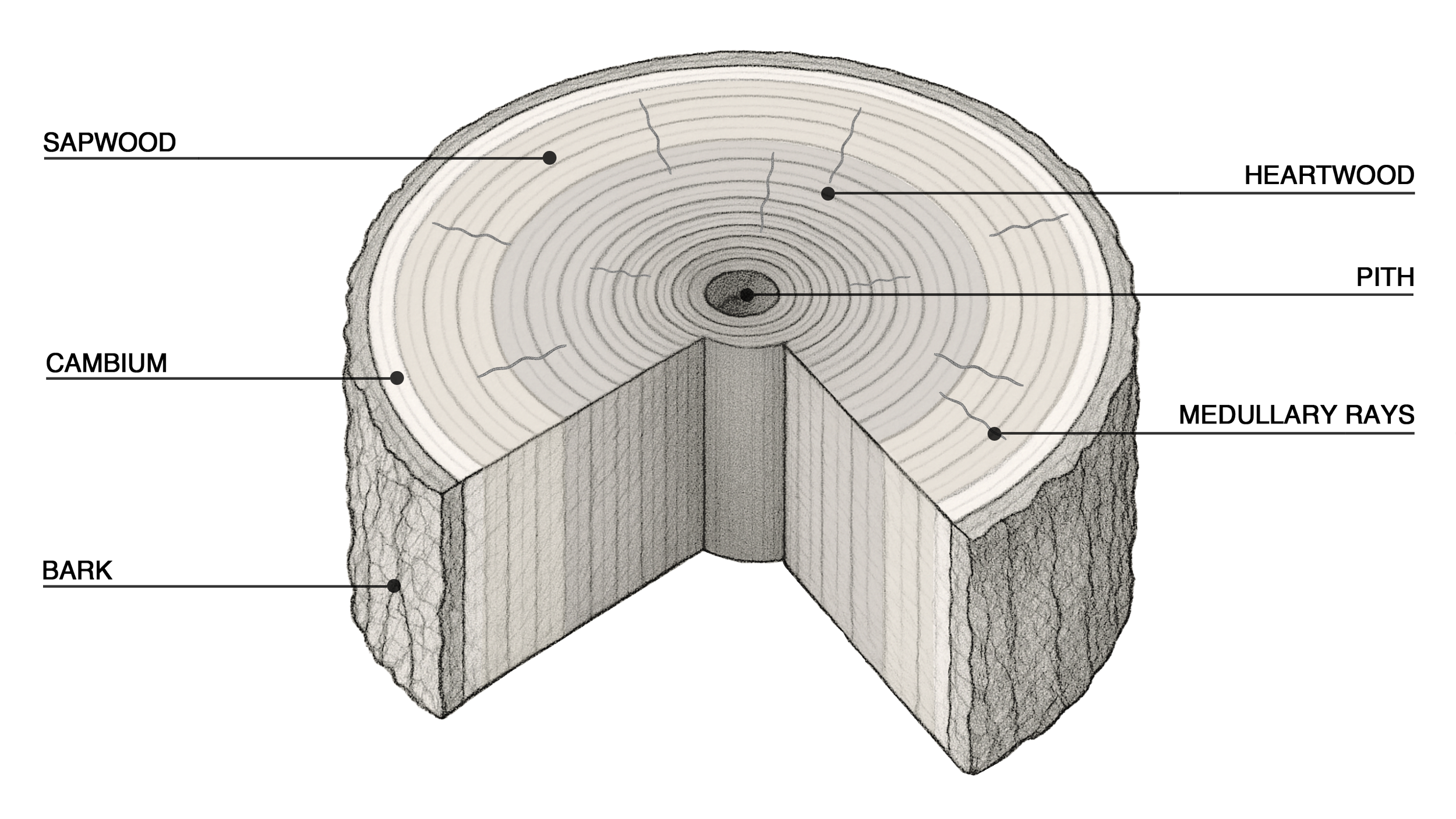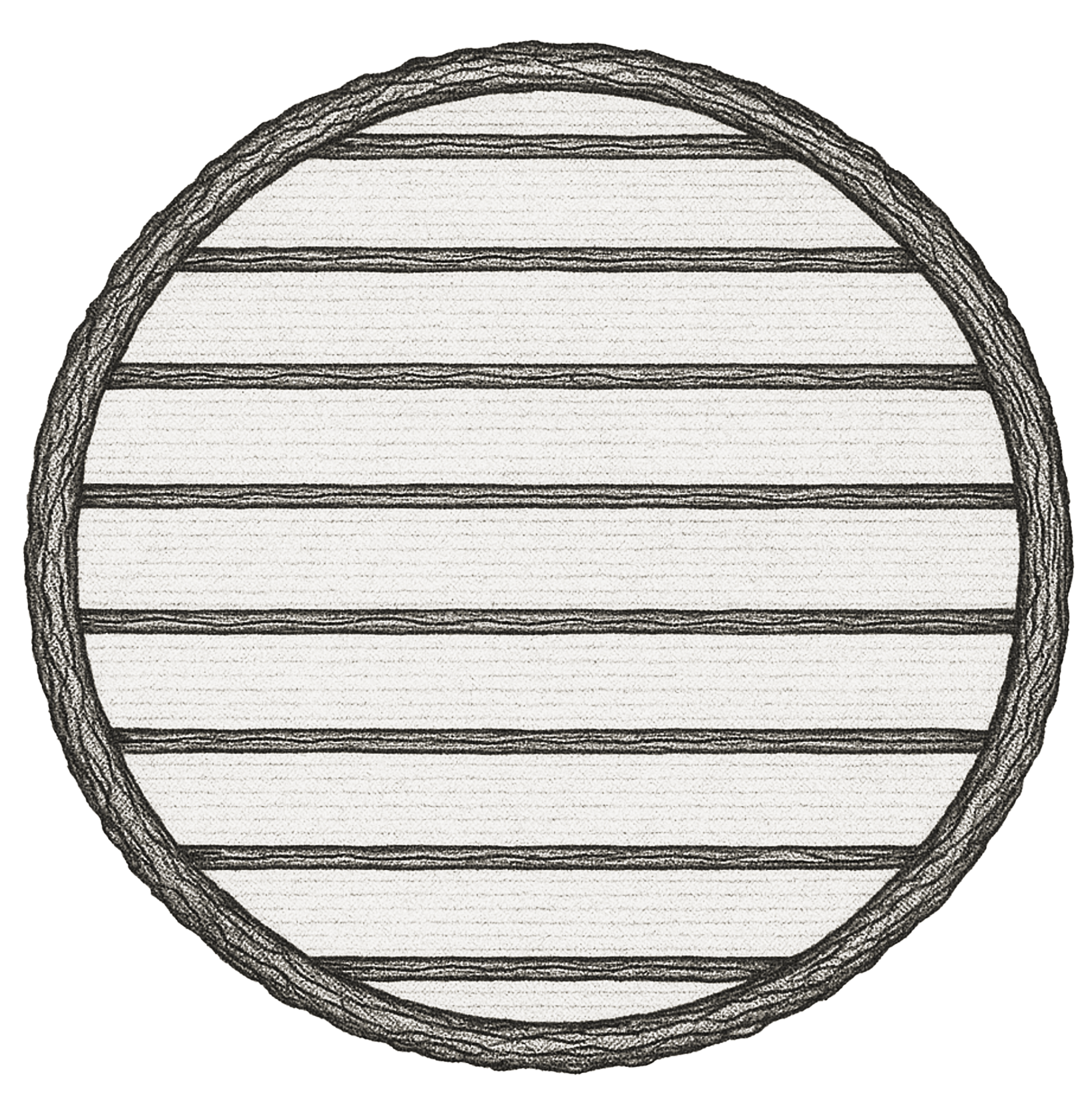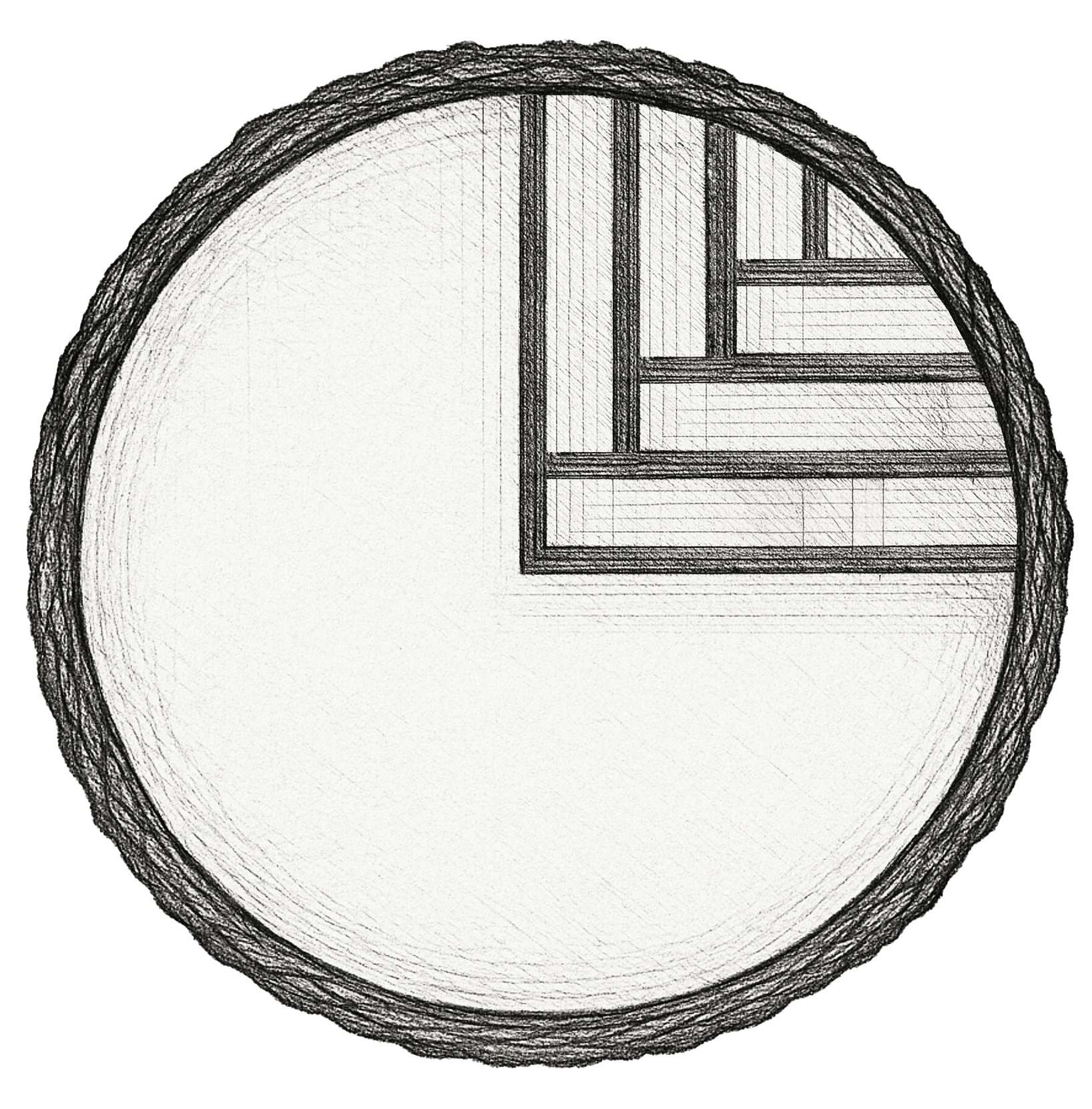A Crash Course in Cuts
Not everyone needs to geek out over grain direction and sawing methods, but if you’re here, you’re our people. This guide breaks down the basics of how wood is cut and why it matters. Different cuts affect the look, strength, and stability of the boards you work with, and no two are exactly alike. It’s a natural material, after all. Whether you’re building something structural or eye-catching, the right cut makes all the difference.
Key Components of a Log
Sapwood Paler and less stable, it contrasts with heartwood. Creates striking light-dark combos in slabs, but needs sealing if exposed in furniture.
Cambium Too thin to show up in boards, but its job matters—this is the layer that keeps the tree growing straight, strong, and usable for clean cuts.
Bark Usually removed, but sometimes left on for live-edge pieces. It frames the slab and adds a raw, organic vibe that’s hard to fake.
Heartwood Dense, rich, and full of depth. This is the wood you want for beauty and durability, it makes up the best-looking parts of any quality piece.
Pith The center point of the log. Usually cut out because it cracks easily, but it can show up in rustic slabs and add a wild, unpredictable look.
Medullary Rays Visible as shimmering flakes in quarter-sawn boards, especially White Oak. They add a touch of flash and structure to flat surfaces.
Types of Grains
Cathedral Grain (Flame)
Big, arching patterns that look like flames or gothic windows. Found in live-sawn and flat-sawn boards. Loud, organic, and full of character, they’re great for showpiece tables or doors.
Straight Grain
Clean, tight lines that run lengthwise with little variation. Found in rift-sawn and quarter-sawn cuts. Straight grains make for a very stable material with a subtle, modern look for clean joinery and minimalist designs.
We can’t forget Wavy Grain and Curly, Fiddleback, or Quilted Grain. These patterns form when trees grow under stress, twist, or compression. They’re rare in furniture, but used with intention, they add dramatic movement and a ton of character to a piece.
From Log to Board
Imagine you’re looking at a log from the end. The way it’s cut, or milled, can minimize or maximize the types of grain.
Live-Sawn
Cut straight through the log, no turning.
Used For: Live-edge tables
Waste: Low
Stability: Fair. Can have mixed movement.
Flat or Plain-Sawn
Sliced straight across the full face of the log.
Used For: Flooring, framing, general-purpose boards
Waste: Low
Stability: Low. Most prone to cupping and warping.
Rift-Cut
Cut at a consistent 30–45° angle from the outer edge of the log.
Used For: High-end furniture, clean vertical grain looks
Waste: High
Stability: Excellent. Very resistant to movement.
Quarter-Cut
Log is quartered, then sliced along the growth rings.
Used For: Cabinetry, White Oak, visible ray flecks
Waste: Medium-High
Stability: High. Holds shape well over time.
View from the top of the board
Live-Sawn
The log is sliced straight through, top to bottom—no turning, no fuss. This cut captures the whole grain story in one board: cathedral, straight, and everything in between. Great for wide planks and rustic vibes.
Flat or Plain-Sawn
The log is sliced straight through, top to bottom—no turning, no fuss. This cut captures the whole grain story in one board: cathedral, straight, and everything in between. Great for wide planks and rustic vibes.
Rift-Cut
The log is sliced straight through, top to bottom—no turning, no fuss. This cut captures the whole grain story in one board: cathedral, straight, and everything in between. Great for wide planks and rustic vibes.
Quarter-Cut
The log is sliced straight through, top to bottom—no turning, no fuss. This cut captures the whole grain story in one board: cathedral, straight, and everything in between. Great for wide planks and rustic vibes.
View From the Edge of The Board
Live-Sawn
All the grain. Some straight, some curve. Tells the story of the whole tree, bark to bark.
Flat or Plain-Sawn
Mostly flat lines, but can curve or swirl. More chaotic than it looks.
Rift-Cut
Always vertical and tight. Super clean lines that stay straight, even when things get humid.
Quarter-Cut
Vertical grain with visible ray flecks. Looks sharp and stays put—built for both looks and longevity.















